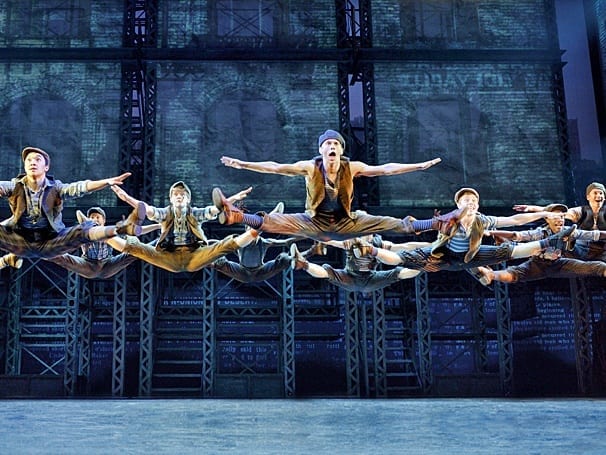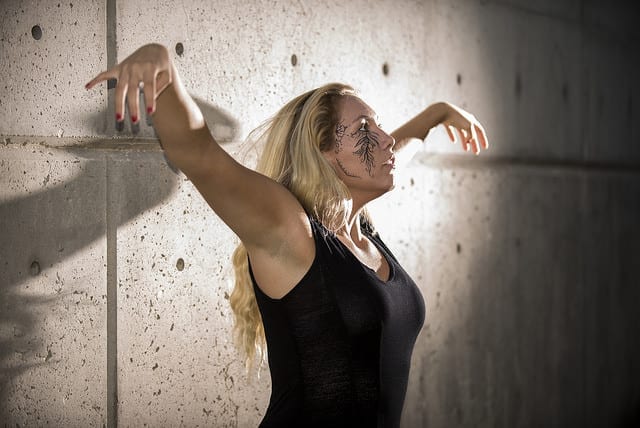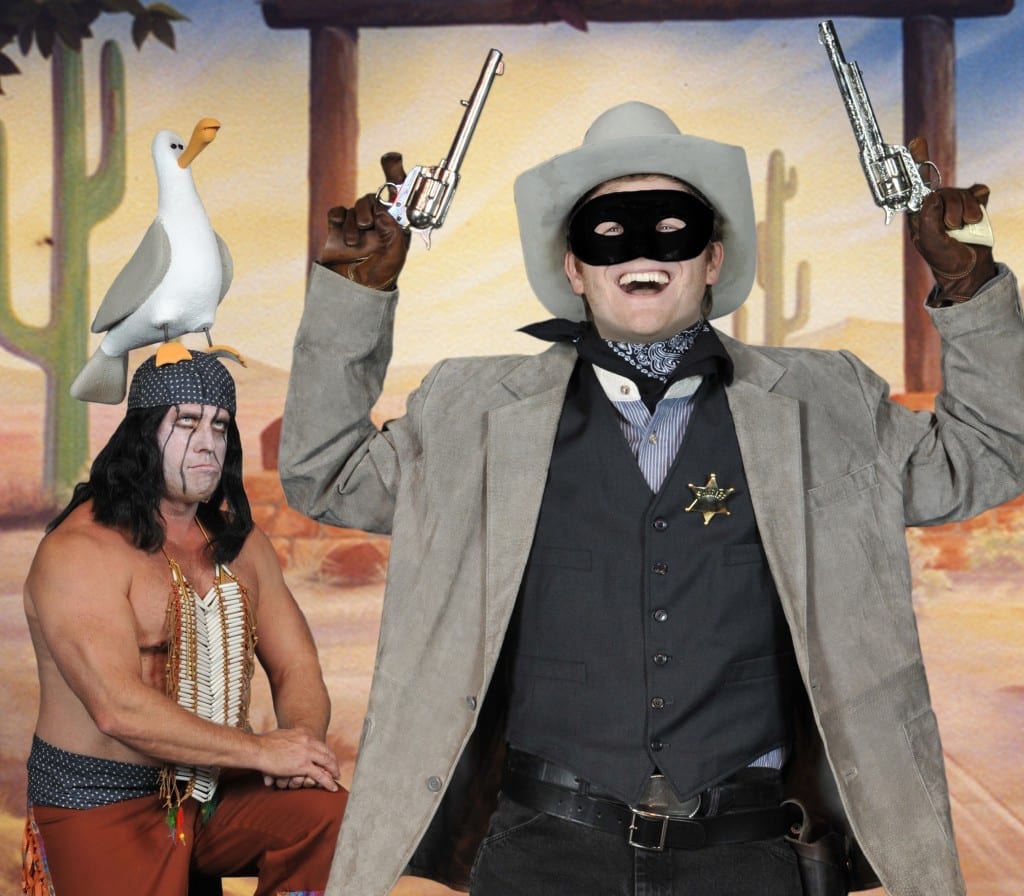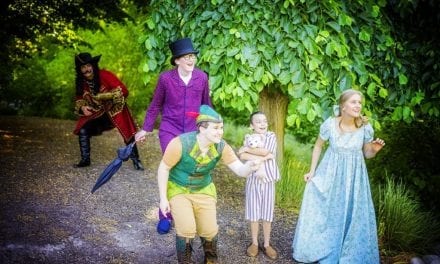SALT LAKE CITY — Last summer as I hit the open road with my three sons, I grabbed a long-neglected CD case full of my earliest collection of discs. Nestled in among my favorite discs from high school and college lay a soundtrack featuring the music of Alan Menken and lyrics of Jack Feldman. As the original film choreography played across the stage of my mind, I realized in sudden horror that I had not yet introduced my children to Newsies, the 1992 film written by Bob Tzudiker and Noni White and directed by Kenny Ortega. I paused the songs, narrating the basic premise of a group of boys determined to form a union and fight for fair treatment as child laborers in New York. I highlighted the word play of lyrics such as, “and the World will know,” explaining that while this was a specific story about standing up against a specific newspaper, its themes were really much bigger. When the final strains sounded, the backseat audience immediately asked to listen again, and the story of Disney’s Newsies reached a new demographic.

Show plays in Salt Lake City through June 12, 2016.
Now, with the stage version of Newsies on national tour, the story has been revamped. A half-dozen brand new songs in addition to revised lyrics and harmonies add depth to show’s original and additional characters. Publishing powerhouse Joseph Pulitzer’s song “The Bottom Line” provides motivation for the increased price in papers, which in turn causes the strike on which the plot hinges. “Watch What Happens,” addresses head on the otherwise potentially inaccurate attention to historical detail in the character of the female reporter Katherine. Crutchie’s second act “Letter from the Refuge” carries haunting resemblance to “Santa Fe,” but stands on its own merits as a breakout ballad. And while I will admit to occasionally feeling as though I had been ripped from a moving train when the momentum of familiar lyrics suddenly veered into unfamiliar territory, each new phrase held true to the familiar literary style and breathed new life into the show’s standard tunes.

Cast members of the national tour of Newsies. Photo by Deen Van Meer.
Harvey Fierstein’s book calls for a collection of central characters including Jack Kelly, Crutchie, Davey, Les, and Katherine, who each serve as charismatic but vitally different leaders in this revolution. Jack Kelly, played by Joey Barreiro, has his sights set on Santa Fe, both in the literal sense of wanting to get out of New York, and in a more figurative manner of simply dreaming of something better. I saw Iain Young in the role of Crutchie, whose final signature on his letter to Jack, signed “your brother,” showed the combination of grit and loyalty necessary to make it on the streets of New York. In Davey, played by Stephen Michael Langton, resides a sense of propriety and dignity and in his younger brother Les, played by Turner Birthisel, a sense of adventure. Finally, as Jack’s love interest and a woman trying to make her own way (and Joseph Pulitzer’s daughter), Katherine as played by Morgan Keene added spunk, determination, and a bit of desperation to the crew. Each actor was well-suited to the unique demands of his or her role bringing more than just stunning vocal ability and mesmerizing dance aplomb to the stage. In particular, Les’s line, “Let the man work it out!” shouted to the other newsies as he tried to create space for Jack to think, represented the cast as a whole: when given space to do their individual thing, each cast member shone.

Morgan Keene as Katherine and Joey Barreiro as Jack Kelly. Photo by Deen van Meer.
Under the music direction of James Dodgson, the diction and harmonies were clear throughout. I really enjoyed the addition of Crutchie’s voice to the opening rendition of “Santa Fe,” adding a harmony to an already beautiful melody. I also noted the particularly full sound of the newsies, only 15 in number, in group numbers such as “The World Will Know.” As I watched these young men dance, I was astounded by the individual athleticism. At times I felt as though I was getting a Broadway musical and gymnastics meet wrapped up in one as actors leaped and flipped, forwards and backwards, across the stage. The dancers danced on every single horizontal surface, bringing a constant energy to the stage.
However, when the choreography of Christopher Gattelli called for unison motions, I was left wanting. While the rhythm of the motions was consistent from actor to actor, the manner in which each person completed the steps varied slightly, most specifically in the positions of the arms. Instead of getting an “all for one” feeling, I was left seeing each character as an individual part of the ensemble. The exception to this was during a particularly impressive spoon sequence during the tap dance number, “King of New York,” when it seemed as if each arm was attached to the same puppeteer’s strings, and the synchronicity was beautiful. I just wish more of the dance numbers were executed with that level of precision.

Andy Richardson as Crutchie and Joey Barreiro as Jack Kelly. Photo by Deen van Meer.
Thanks to the coordination with scenic designer Tobin Ost, the show’s energy never, even halted for a scene change. Instead of waiting for one number to be completed before setting for the next, each new scene came in under the heels of the preceding scene. One example was when newsies danced atop the deli tables at the end of “The World Will Know” in preparation for the upcoming deli scene. In another example, Pulitzer’s desk entered the stage under the feet of a dancer who, upon dismounting and exited the stage, left behind a fully set office scene. These transitions were possible in large part due to the three-by-three steel grid which became a combined backdrop and set. In some scenes, each block was covered by a screen on which the necessary background could be projected. When the screens were open, however, I felt like I was watching newsies dance in each of the nine iconic Brady Bunch tiles with each tile appearing as the three-dimensional steel structure of a New York City apartment building.

Cast members of the national tour of Newsies. Photo by Deen Van Meer.
Despite the numerous magical moments delivered through both song and dance, the biggest moment for me was driven by the technical capabilities embedded in the scenery and the smart staging of director Jeff Calhoun. The newsies had just taken a packet each of pamphlets to deliver to all the child laborers in the city. Against the pulsing background of “Once and for All,” they took to the nine sections of steel, threw down each packet, untied the cord, and presented one copy of the bulletin. Then, as each stood in solidarity holding a perfectly still headline, the entire steel structure moved forward on the stage. As not one single actor moved, I felt the hair on my arms stand and felt the emotion that can only be generated through the live telling of a story.
Sure, I had worried about whether this new stage version could hold up to the expectations bred in me by my love of the original Newsies movie. Sure, I balked at the changes in the characters and whined about the altered lyrics. But as I sat there on the red velvet seats at the Capitol Theatre and watched Jack Kelly spit on his hand to confirm his agreement with Pulitzer, I stopped comparing the movie to the musical. Newsies tells the story of a group of boys determined to form a union and fight for fair treatment as child laborers in New York. And it tells it in its own way.





